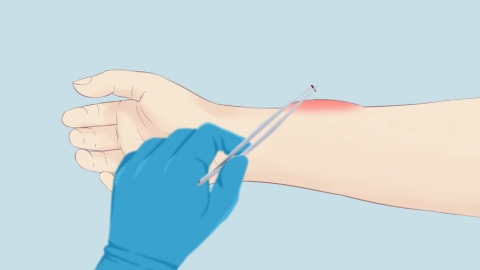What to do if stung by a wasp
If stung by a hornet, immediately move away from the hornet activity area, carefully remove the stinger, clean the wound with water or soapy water, apply a cold compress to relieve discomfort, and closely monitor your physical condition. If symptoms such as difficulty breathing, dizziness, or widespread rash occur, seek emergency medical care at a hospital immediately.

1. Immediately leave the hornet activity area: After being stung, quickly move away from the current environment. Avoid lingering or swatting at hornets to prevent further stings and reduce toxin exposure. Stay as calm as possible and avoid vigorous exercise, which could accelerate the spread of toxins in the body.
2. Carefully remove the stinger: If a hornet stinger remains in the skin, gently lift it out using tweezers or a fingernail. Avoid squeezing the venom sac during removal to prevent additional venom from entering the body. After removal, inspect the wound to ensure no fragments remain, minimizing local tissue irritation from residual toxins.
3. Clean the wound with water or soapy water: Hornet venom is alkaline. Rinse the wound thoroughly with running water. If available, use soapy water first. Wash repeatedly for 2–3 minutes to help neutralize some of the venom and reduce local symptoms such as redness, swelling, and pain.
4. Apply a cold compress to relieve discomfort: Wrap an ice pack or cold towel in a clean cloth and apply it to the affected area for 15–20 minutes. Repeat every 1–2 hours. The cold helps constrict blood vessels, limiting venom spread and reducing swelling and pain.
5. Closely monitor your physical condition: Observe yourself continuously for 30 minutes to one hour after the sting. Watch for symptoms such as itching, widespread rash, dizziness, nausea, or difficulty breathing. Record the onset time and progression of symptoms to provide detailed information for medical evaluation if needed.
For daily care, keep the stung area clean and dry, avoid scratching to prevent infection, maintain a light diet and avoid spicy or irritating foods. If there is mild redness and swelling, continue applying cold compresses, and avoid areas where hornets are commonly found, such as flower bushes or tree holes.





